Related Research Articles

The Tour de France is an annual men's multiple-stage bicycle race held primarily in France. It is the oldest and most prestigious of the three Grand Tours, which include the Giro d'Italia and the Vuelta a España.

Paris–Brest–Paris (PBP) is a long-distance cycling event. It was originally a 1,200 km (750 mi) bicycle race in France from Paris to Brest and back to Paris in 1891. The last time it was run as a race was 1951. The most recent edition of PBP was held on 20 August 2023.

Lucien Georges Mazan was a French racing cyclist, known as the first two-time winner of the Tour de France.

Road bicycle racing is the cycle sport discipline of road cycling, held primarily on paved roads. Road racing is the most popular professional form of bicycle racing, in terms of numbers of competitors, events and spectators. The two most common competition formats are mass start events, where riders start simultaneously and race to a set finish point; and time trials, where individual riders or teams race a course alone against the clock. Stage races or "tours" take multiple days, and consist of several mass-start or time-trial stages ridden consecutively.
The Bordeaux–Paris professional cycle race was one of Europe's classic cycle races, and one of the longest in the professional calendar, covering approximately 560 km (350 mi) – more than twice most single-day races. It started in northern Bordeaux in southwest France at 2am and finished in the capital Paris 14 hours later. The professional event was held from 1891 until 1988. It was held as an amateur event in 2014.

The 1904 Tour de France was the second Tour de France, held from 2 to 24 July. With a route similar to its previous edition, 1903 Tour de France winner Maurice Garin seemed to have repeated his win by a small margin over Lucien Pothier, while Hippolyte Aucouturier won four of the six stages. But the race became a victim of its own success, plagued by scandals; cyclists were accused of having taken trains during the race. Twelve cyclists, including the first four of the final classification and all stage winners, were disqualified by the Union Vélocipédique Française (UVF). Henri Cornet, originally the fifth-place finisher, was awarded the victory four months after the race. The problems caused the Tour de France to be provisionally cancelled, and subsequently the 1905 Tour de France was run with different rules from the 1903 and 1904 editions.
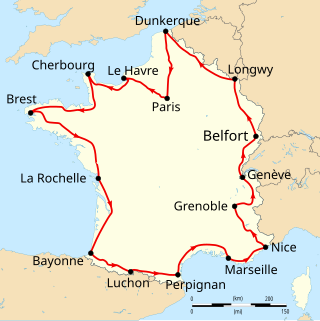
The 1914 Tour de France was the 12th edition of the Tour de France, taking place in 15 stages from 28 June to 26 July. The total distance was 5,380 kilometres (3,340 mi) and the average speed of the riders was 26.835 kilometres per hour (16.674 mph). It was won by the Belgian cyclist Philippe Thys.

The 1905 Tour de France was the third edition of the Tour de France, held from 9 to 30 July, organised by the newspaper L'Auto. Following the disqualifications after the 1904 Tour de France, there were changes in the rules, the most important one being the general classification not made by time but by points. The race saw the introduction of mountains in the Tour de France, and René Pottier excelled in the first mountain, although he could not finish the race. Due in part to some of the rule changes, the 1905 Tour de France had less cheating and sabotage than in previous years, though they were not eliminated. It was won by Louis Trousselier, who also won four of the eleven stages.
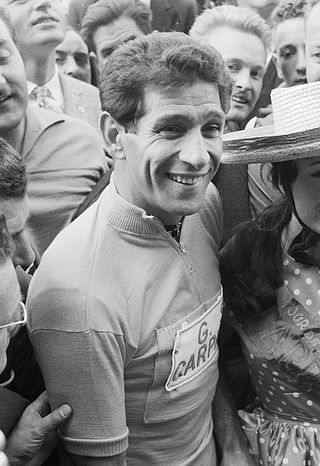
Gastone Nencini was an Italian road racing cyclist who won the 1960 Tour de France and the 1957 Giro d'Italia.

Henri Pélissier was a French racing cyclist from Paris and champion of the 1923 Tour de France. In addition to his 29 career victories, he was known for his long-standing feud with Tour founder Henri Desgrange and for protesting against the conditions endured by riders in the early years of the Tour. He was killed by his lover with the gun that his wife had used to commit suicide.

Léon Scieur was a Belgian cyclist who won the 1921 Tour de France, along with stages 3 and 10. His first great victory was the 1920 Liège–Bastogne–Liège; he won a stage and finished fourth in the 1919 and 1920 Tours de France.

The 1919 Tour de France was the 13th edition, taking place from 29 June to 27 July covering a total distance of 5,560 kilometres (3,450 mi). It was the first Tour de France after World War I, and was won by Firmin Lambot. Following the tenth stage, the yellow jersey, given to the leader of the general classification, was introduced, and first worn by Eugène Christophe.

Seamus "Shay" Elliott was an Irish road bicycle racer, Ireland's first major international rider, with a record comparable only to Sean Kelly and Stephen Roche. He was the first Irish person to ride the Tour de France, first to win a stage, and first to wear the yellow jersey, and first English speaker to win stages in all the Grand Tours.

Oscar Egg was a Swiss track and road bicycle racer. He captured the world hour record three times before the First World War and won major road races and stages of the Tour de France and Giro d'Italia. He was also a noted developer of racing bicycles and bicycle components including lugs and derailleurs.
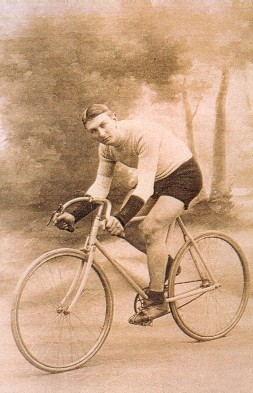
Jean Alavoine was a French professional cyclist, who won 17 stages in the Tour de France - only eight riders have won more stages - and wore the yellow jersey for five days.
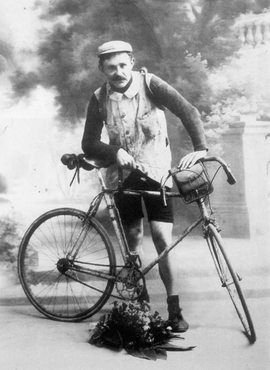
Henri Vanlerberghe was a Belgian professional road bicycle racer. In 1919, he won the third edition of the Tour of Flanders.
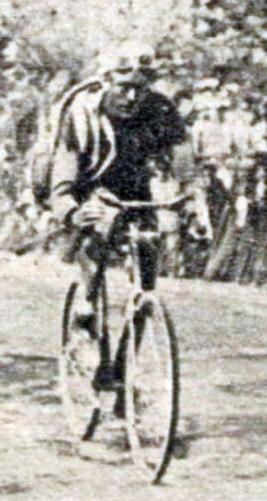
Albert Dejonghe was a Belgian professional road bicycle racer. He won Paris–Roubaix in 1922, one stage in the 1923 Tour de France and finished 5th and 6th in the 1925 and 1926 Tour de France.
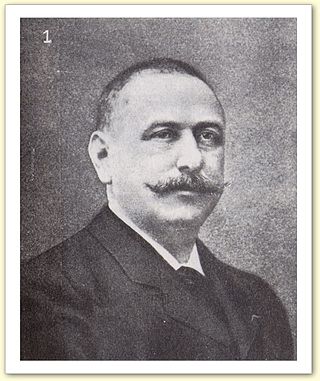
Pierre Giffard was a French journalist, a pioneer of modern political reporting, a newspaper publisher and a prolific sports organiser. In 1892, he was appointed Chevalier (Knight) of the Légion d'Honneur and in 1900 he was appointed an Officier (Officer) of the Légion d'Honneur.
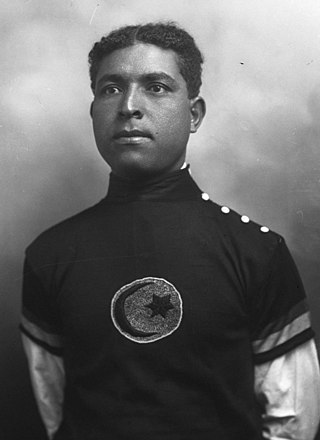
Ali Neffati was a Tunisian cyclist who was professional between 1913 and 1930. He is known for being the first person from the African continent to participate in the Tour de France, when he participated in the 1913 edition. He also was in the 1914 Tour de France, but didn't finish either of them. In the 1914 Tour, he was hit by a car from the organization, and could not continue.

Charles Deruyter was a Belgian professional road and track racing cyclist. His best results on the road included second place in the 1913 Paris–Roubaix and the 1923 Tour of Flanders, and winning the only edition of the Circuit des Champs de Bataille held as a stage race, in 1919.
References
- 1 2 3 4 Thompson, Christopher S. (2008). Tour de France: A Cultural History. Berkeley: University of California Press. pp. 52–55. ISBN 9780520256309.
- 1 2 3 4 5 6 7 8 9 Isitt, Tom (9 July 2014). "Circuit des Champs de Bataille". Rouleur. Archived from the original on 17 November 2015. Retrieved 13 November 2015.
- 1 2 3 4 Isitt, Tom (8 April 2014). "Saddles, Somme and snow: a tale of the toughest cycle race ever". The Guardian. Retrieved 13 November 2015.
- ↑ Knuts, Stijn; Delheye, Pascal (2015). "Sport, Work and the Professional Cyclist in Belgium, 1907–40". History Workshop Journal. 79 (1): 154–176. doi:10.1093/hwj/dbu022. S2CID 162187026.
- ↑ "Circuit des Champs de Bataille". Cycling Archives. Retrieved 13 November 2015.